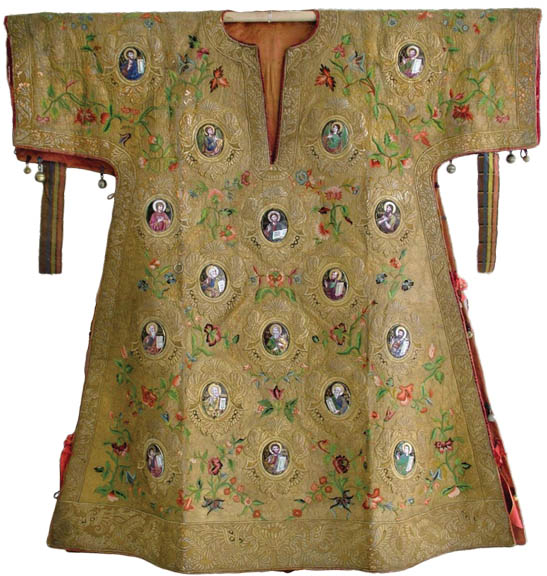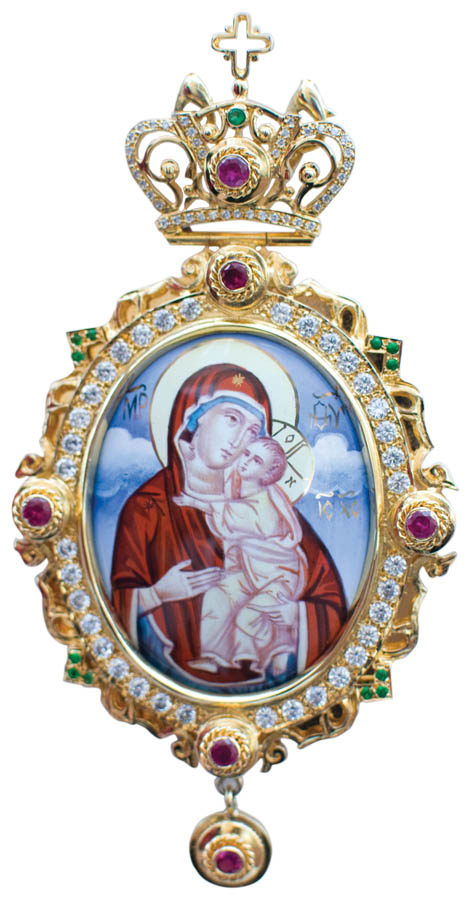Vestments of the Ecumenical Patriarch
What may appear to be merely expensive,
flashy accessories are reminders of the
expectation that bishops carry on the
leadership of Christ's
Apostles.

SAKKOS and OMOPHORION: All
bishops today wear the sakkos. The garment
was first worn by the emperor and then later by the
Patriarch of Constantinople as well. The
sakkos is another symbol of his leadership
of the Church. Over it, a bishop wears an
omophorion around his neck and shoulders,
just as Christ the Good Shepherd carried
the lost sheep.
 STAFF: The bishop's staff
is easily recognized as a shepherd's staff. Look up John 21:15–18.
What must Peter do to act out his love for
Jesus? Another meaning of the bishop's staff is
his healing role—just like the medical
community's use of the snake twining
around the rod of Asclepius.
STAFF: The bishop's staff
is easily recognized as a shepherd's staff. Look up John 21:15–18.
What must Peter do to act out his love for
Jesus? Another meaning of the bishop's staff is
his healing role—just like the medical
community's use of the snake twining
around the rod of Asclepius.
 ENGOLPION: During services, bishops usually wear a
pectoral (from the Latin for "chest")
cross and a medallion that is called a
Panagia or engolpion (from the Greek for
"chest"). A bishop who leads a Church may
also wear a second engolpion with an icon
of Christ. Outside of church services,
bishops usually wear just the
engolpion.
ENGOLPION: During services, bishops usually wear a
pectoral (from the Latin for "chest")
cross and a medallion that is called a
Panagia or engolpion (from the Greek for
"chest"). A bishop who leads a Church may
also wear a second engolpion with an icon
of Christ. Outside of church services,
bishops usually wear just the
engolpion.
 CANDLES: The dikerion (double candle) symbolizes
the two natures of Christ and the trike- rion (triple
candle) symbolizes the Holy Trinity. They
remind us of the bishop's role as our
First Teacher of the Faith.
CANDLES: The dikerion (double candle) symbolizes
the two natures of Christ and the trike- rion (triple
candle) symbolizes the Holy Trinity. They
remind us of the bishop's role as our
First Teacher of the Faith.
MITRE: The bishop's crown we see today was not used until after the fall of Constantinople (1453). The Ecumenical Patriarch was giventhe responsibility of leading the Orthodox Christian community within the Ottoman Emmpire. He wears the crown as a sign of his leadership of the community.

